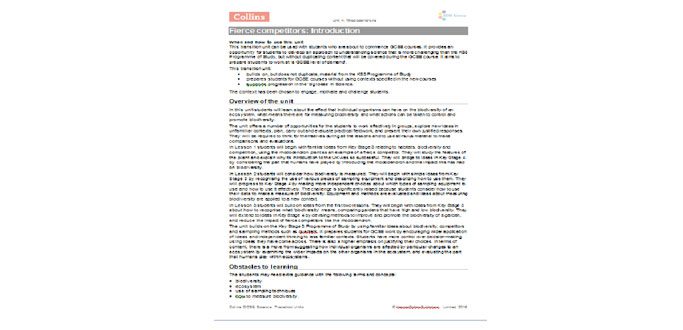Intended for learners transitioning from KS3 to the new GCSE science specifications (the first exams for which are due in summer 2018)
Contents: – 1x introduction for teachers – 3x lesson plans – 3x worksheets – 2x resource sheets – 2x PowerPoint presentations – 1x technician notes
Objectives: Students learn about the effect that individual organisms can have on the biodiversity of an ecosystem, methods of measuring biodiversity and what actions can be taken to control and promote biodiversity.
Lesson 1 Students begin with familiar ideas from KS3 relating to habitats, biodiversity and competition, using the rhododendron plant as an example of a fierce competitor. They will study the features of the plant and explain why its introduction to the UK was so successful. They will bridge to ideas in Key Stage 4 by considering the part that humans have played by introducing the rhododendron and the impact this has had on biodiversity.
Lesson 2 Students consider how biodiversity is measured. They will begin with simple ideas from KS3 by recognising the use of various pieces of sampling equipment and describing how to use them. They then progress to KS4 by making more independent choices about which types of sampling equipment to use and how to use them effectively. The challenge is significantly raised because students consider how to use their data to make a measure of biodiversity. Equipment and methods are evaluated and ideas about measuring biodiversity are applied to a new context.
Lesson 3 Students begin with ideas from KS3 about how to recognise what ‘biodiversity’ means, comparing gardens that have high and low biodiversity. They then extend to KS4 ideas by devising methods to improve and promote the biodiversity of a garden, and reduce the impact of fierce competitors like the rhododendron.














